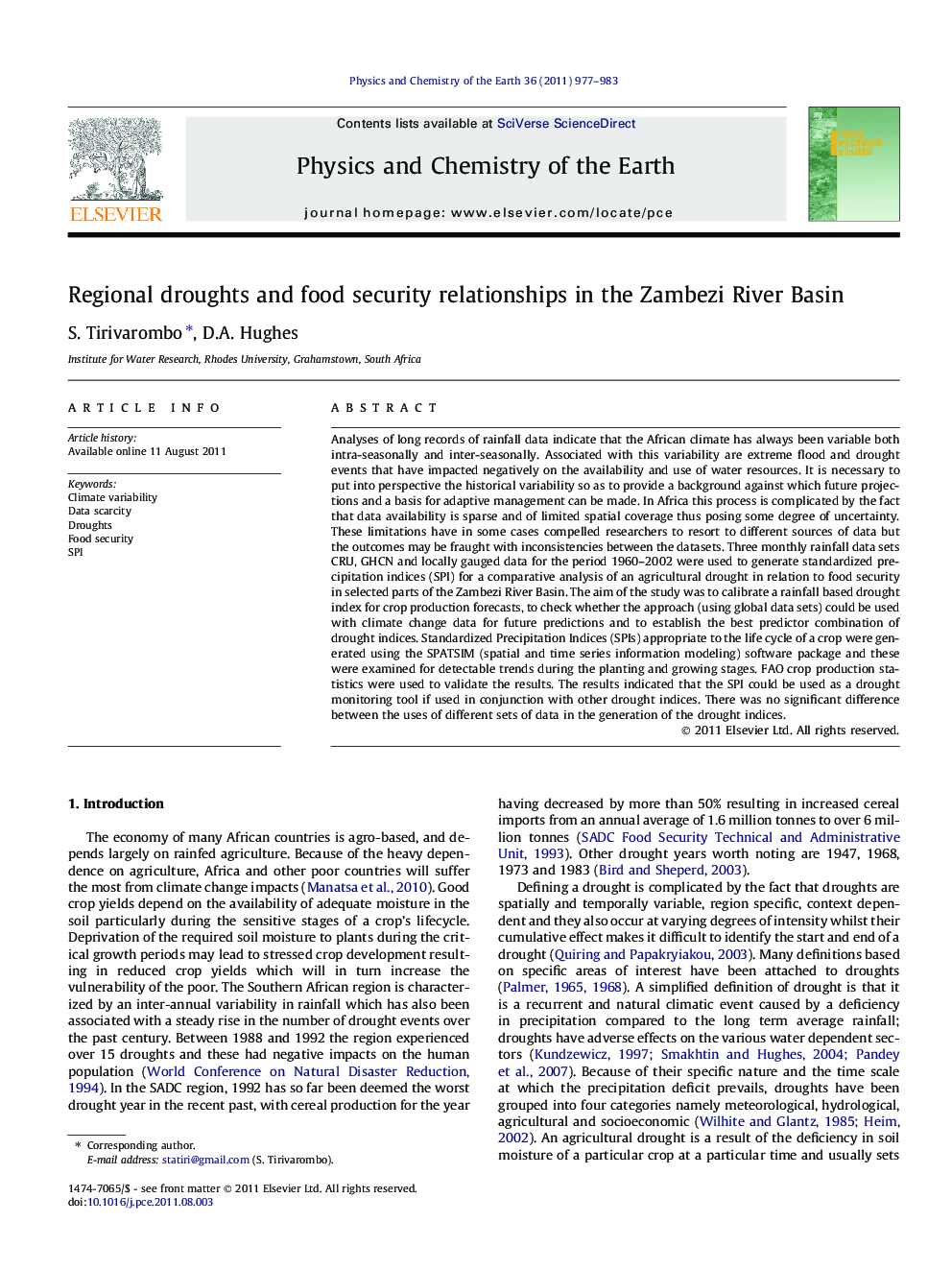| کد مقاله | کد نشریه | سال انتشار | مقاله انگلیسی | نسخه تمام متن |
|---|---|---|---|---|
| 4721315 | 1639374 | 2011 | 7 صفحه PDF | دانلود رایگان |

Analyses of long records of rainfall data indicate that the African climate has always been variable both intra-seasonally and inter-seasonally. Associated with this variability are extreme flood and drought events that have impacted negatively on the availability and use of water resources. It is necessary to put into perspective the historical variability so as to provide a background against which future projections and a basis for adaptive management can be made. In Africa this process is complicated by the fact that data availability is sparse and of limited spatial coverage thus posing some degree of uncertainty. These limitations have in some cases compelled researchers to resort to different sources of data but the outcomes may be fraught with inconsistencies between the datasets. Three monthly rainfall data sets CRU, GHCN and locally gauged data for the period 1960–2002 were used to generate standardized precipitation indices (SPI) for a comparative analysis of an agricultural drought in relation to food security in selected parts of the Zambezi River Basin. The aim of the study was to calibrate a rainfall based drought index for crop production forecasts, to check whether the approach (using global data sets) could be used with climate change data for future predictions and to establish the best predictor combination of drought indices. Standardized Precipitation Indices (SPIs) appropriate to the life cycle of a crop were generated using the SPATSIM (spatial and time series information modeling) software package and these were examined for detectable trends during the planting and growing stages. FAO crop production statistics were used to validate the results. The results indicated that the SPI could be used as a drought monitoring tool if used in conjunction with other drought indices. There was no significant difference between the uses of different sets of data in the generation of the drought indices.
► The SPI can be used as a drought monitoring tool if used in conjunction with other drought indices or agricultural models.
► There are no significant differences between GHCN, CRU and local data sets in generating the SPIs.
► The different sets of precipitation data can be used to complement each other in order to improve the results.
► Data paucity is a major problem in the African region.
Journal: Physics and Chemistry of the Earth, Parts A/B/C - Volume 36, Issues 14–15, 2011, Pages 977–983